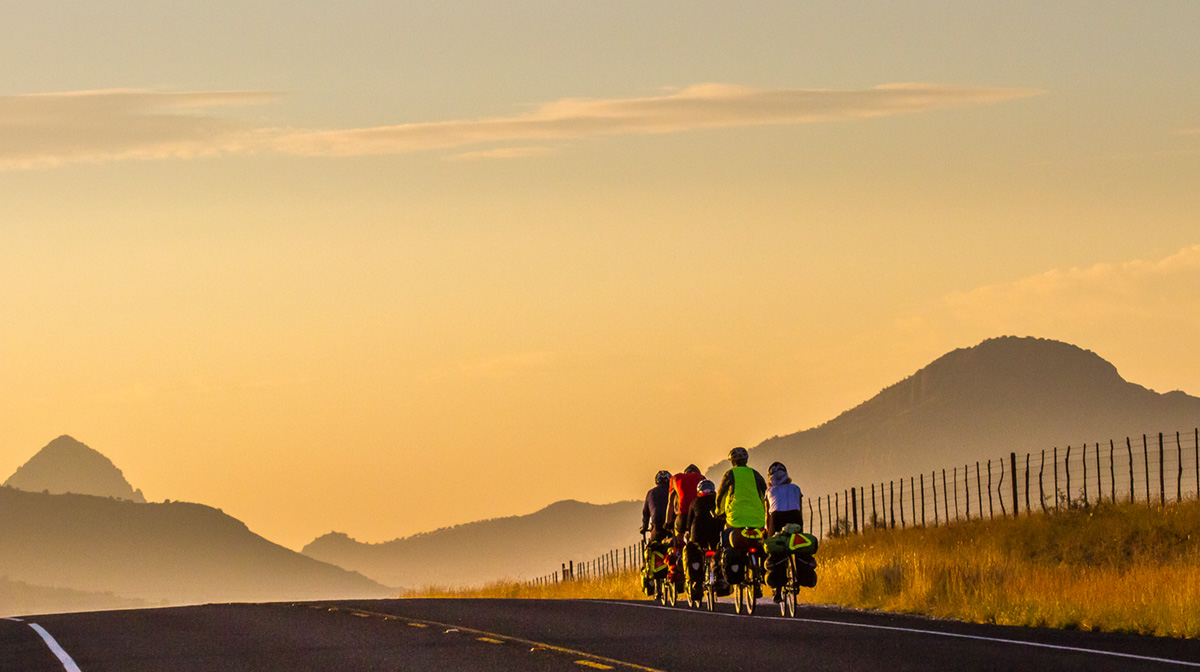When to Ride: Southern Tier
I’ve got the Southern Tier Bicycle Route on my mind during these dark winter days.
The Southern Tier is one of those routes that has a distinct “season” for riding due to the effect extreme weather conditions can have on a cyclist’s experience. We believe it is generally best ridden early fall or spring for optimum conditions.
There are three factors contributing to this advice: deserts, mountain passes, and hurricane season.
The long desert stretch from Brawley to Palo Verde, California, can produce high temperatures even in early May. As we recently heard from a concerned resident of Palo Verde, “During May, this locale needs to be wisely considered day by day according to the temperature. After late May to mid-September, this locale is not at all safe to be out on a bike. We spike up to 130 degrees, average 118 for many many days without cooling at night…well it cools down [at night] to 100 degrees.”
Compounding the issue of high temperatures is also the relative lack of services, including sources of water, on this stretch. Many of the businesses, including campgrounds, are run seasonally and close during the summer months due to lack of business.
On the flip side, though the Southern Tier only crosses the Continental Divide three times, the highest pass in New Mexico is more than 8,000 feet. Late spring or early fall snowstorms can temporarily close passes sometimes. Most of the time they are cleared in a day or two with snow accumulation pushed to the side of the road. You will need to pay attention to weather reports and be prepared to wait it out a day or two if need be.

And finally, hurricane season can have a detrimental effect on the route from Baton Rouge, Louisiana, to Pensacola, Florida, and sometimes even as far west as Navasota, Texas. The official hurricane season is typically June through November with the peak considered to be August through October. Even if a hurricane doesn’t come inland far enough to impact the route directly, there is a ripple effect on services and traffic volumes as displaced populations and rescue/rebuilding workers move in.
Based on all of these factors, for spring eastbound departures, we advise leaving in early March while westbound departures could occur as early as February to be across the desert by the end of April. For fall eastbound and westbound departures, early to mid-September is a good target.
Learn more about the Southern Tier route from our Route Network page and be sure to click on the Logistics and Terrain tabs for more information.
This story has been updated and was originally published on September 12, 2013.

